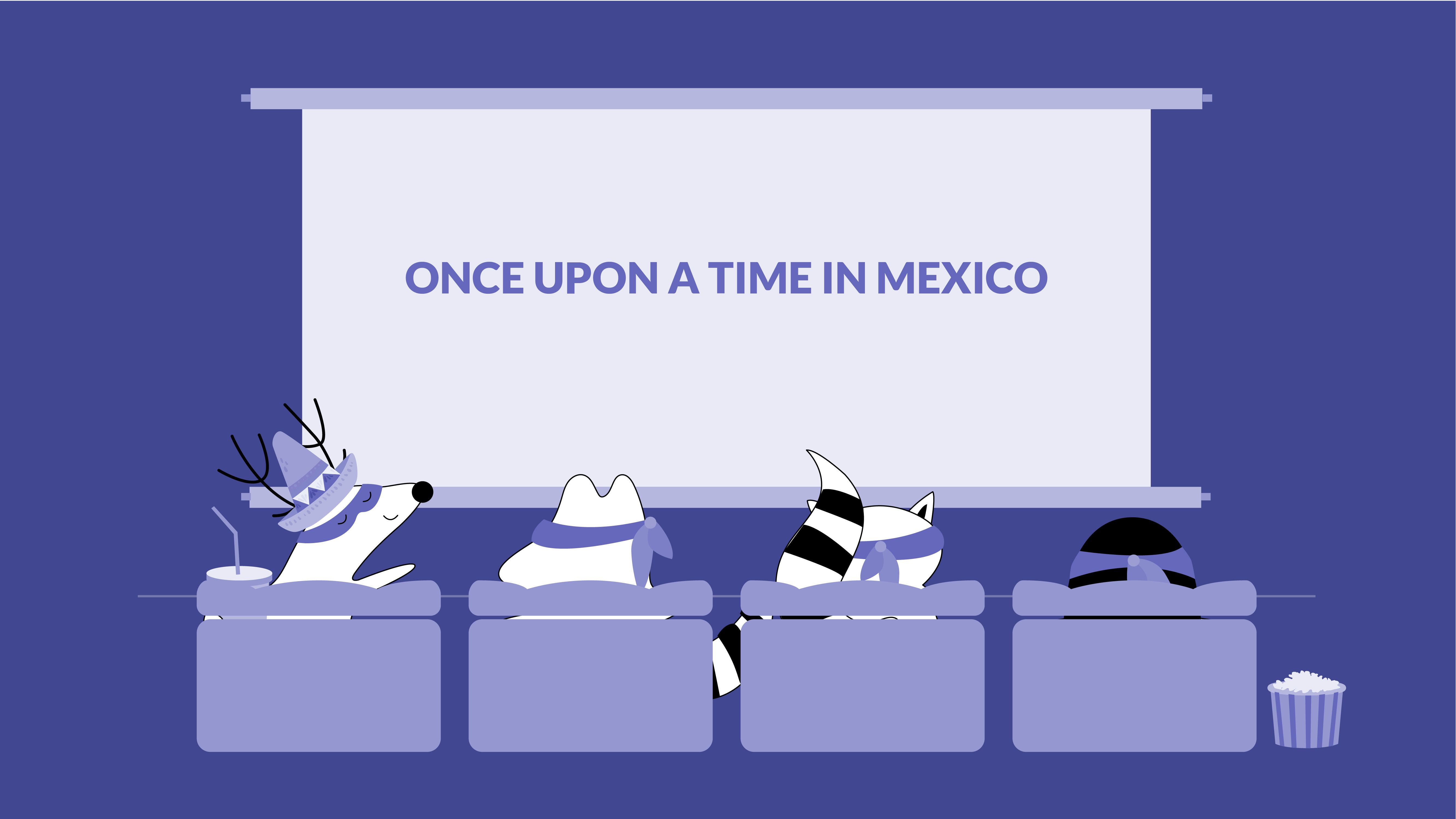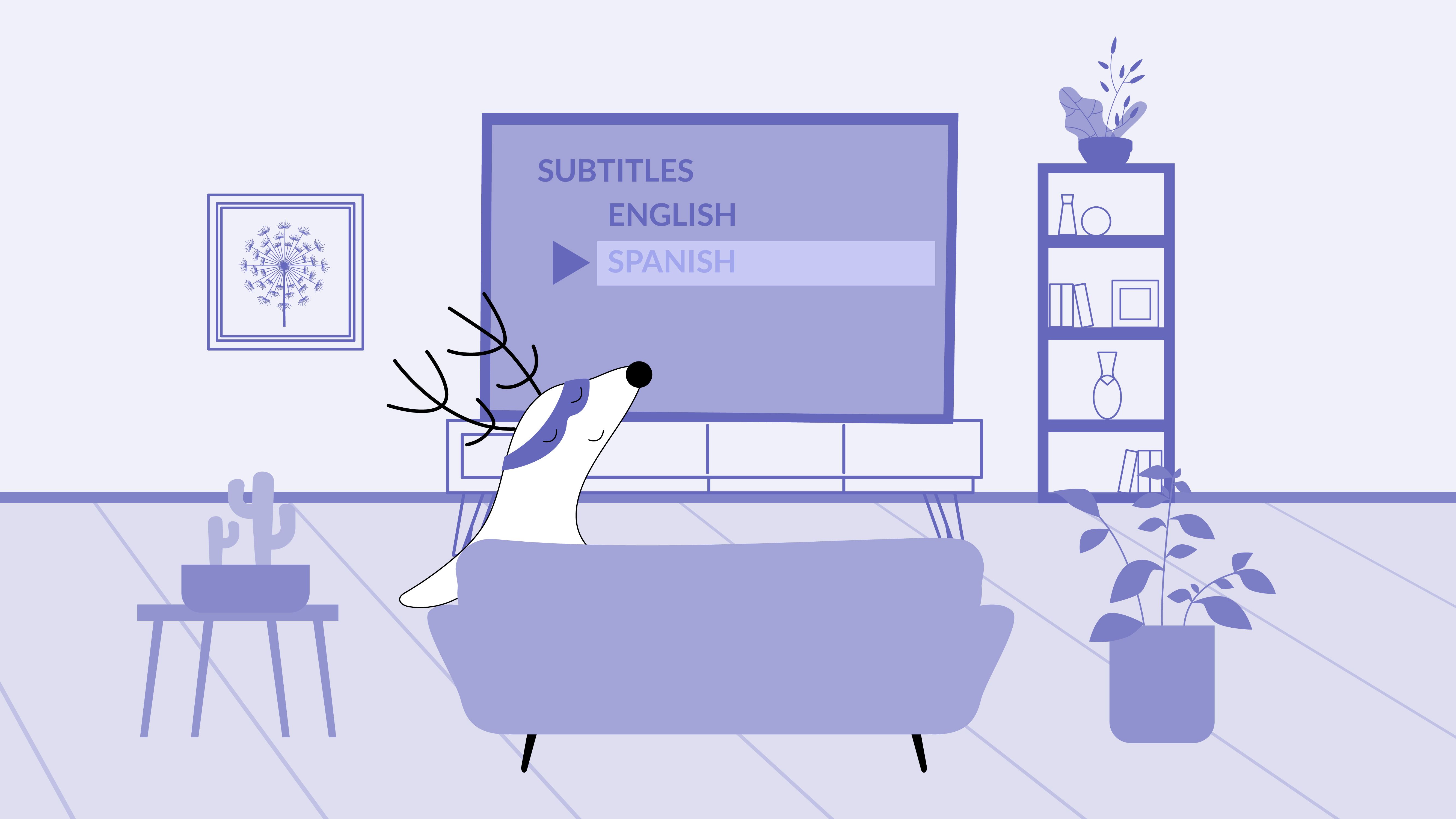
If you're learning Spanish and looking for a fun, engaging way to enhance your language skills, immersing yourself in Spanish cinema is an excellent strategy. Movies not only provide auditory comprehension practice but also grant insights into the culture and context behind the language.
Plus, with the convenience of streaming platforms like Netflix, you can dive into the world of Spanish cinema from the comfort of your own home. Whether you're a novice Spanish learner or an advanced speaker, you’ll find something to watch on our list of the top 5 Spanish films available on Netflix.
These movies aren't just language lessons — they're critically acclaimed cinematic experiences offering intriguing plots and captivating performances. Get ready to learn, engage, and be entertained!
Learn Spanish with Langster
Why Watch Movies in Spanish?
Watching Spanish language movies when learning the language can be an invaluable tool. Not only does it expose you to the natural rhythm, speed, and intonation of spoken Spanish, but it also introduces you to colloquial expressions and slang that are not typically taught in a classroom setting.
Furthermore, listening to dialogue in context helps improve comprehension skills and familiarizes you with cultural nuances and customs, providing a broader understanding of the language's real-world application.
Here are five practical Spanish phrases you might pick up from Spanish movies on Netflix, along with their English translations:
Spanish
English
¿Cómo te llamas?
What's your name?
Mucho gusto.
Nice to meet you.
No entiendo.
I don't understand.
¿Dónde está el baño?
Where is the bathroom?
Hasta mañana.
See you tomorrow.

Now, let’s move on to our top picks!
Roma (2018) — A Cinematic Masterpiece
Roma, directed by Alfonso Cuarón, is a beautiful black-and-white film that pays homage to Cuarón's own childhood in Mexico City. Set in the early 1970s, the movie follows the life of Cleo, a domestic worker for a middle-class family.
It's an intimate, meticulously crafted portrait of the trials and tribulations of both Cleo and her employer's family against the backdrop of political turmoil in Mexico. As a language learner, you'll be exposed to the Mexican dialect and colloquialisms, offering you a more profound linguistic understanding.
This is one of the best Spanish-language movies on Netflix, as it offers several advantages for students. Firstly, the dialogue is relatively slow and clear, making it easier for learners to follow along.
Additionally, the cultural context presented through the movie provides insights into Mexico's socio-political climate during the 1970s, a salient topic for anyone interested in Mexican history or culture. Cuarón's attention to detail and poignant storytelling make Roma not only a language-learning tool but also a cinematic gem.
Verónica (2017) — A Riveting Spanish Thriller
Verónica, directed by Paco Plaza, stands as a thrilling addition to the horror genre within Spanish cinema. Based on a true story, this horror movie revolves around a young girl named Verónica who, after playing with an Ouija board, starts experiencing disturbing and inexplicable phenomena.
As eerie events escalate, Verónica's life spirals into a nightmare, and her only hope of survival lies in unraveling the board’s sinister secrets.
As a language learner, you'll get to hear a variety of Spanish dialects and colloquial language throughout the movie. Not only does Verónica offer a riveting story, but it also provides a window into Spanish urban life and family dynamics.
The main character, Verónica, is a big sister to two younger siblings and a surrogate mother in their happily married mother's absence, which adds a layer of emotional complexity to the movie.
Despite the horror and suspense, Verónica, at its core, can also be viewed as a historical drama depicting early 1990s Spain. The cultural and historical context is subtly woven into the narrative, providing a unique insight into the era's social structure and daily life.
This combination of thriller, drama, and historical insight makes Verónica an excellent choice for both language learning and entertainment when it comes to Spanish language films.
El Olivo (2016) — A Heartwarming Spanish Drama

The Olive Tree, directed by Icíar Bollaín, is a touching Spanish film that blends familial drama and social critique within a deeply personal narrative. Based on a true story, the plot centers on a young woman and distinguished citizen named Alma who embarks on a journey to recover a beloved 2,000-year-old olive tree sold off by her family in times of economic crisis.
As the tree holds significant sentimental value, representing her bond with her ailing grandfather, Alma's quest is as much about reclaiming her family's heritage as it is about healing.
For language learners, The Olive Tree presents an opportunity to hear the natural cadence and intonation of conversational Spanish, complete with colloquial phrases and regional expressions. The narrative offers a glimpse into the rural life and traditions of Spain, as well as the societal impacts of economic downturns.
Beyond its language learning advantages, The Olive Tree is a poignant tale of persistence, love, and deep-rooted connections, making it a must-watch for those seeking a heartwarming cinematic experience.
Julieta (2016) — A Tale of Love and Loss
Julieta, directed by the renowned Pedro Almodóvar, is an emotional drama that explores themes of love, loss, and regret.
The story unfolds as Julieta, a happily married mother, is about to leave Madrid for Portugal when a chance encounter triggers a wave of painful memories. Julieta then turns to writing to confront her past—and the daughter from whom she’s been estranged for years.
Julieta offers a rich exposure to the nuances of Spanish, from everyday dialogues to more emotionally charged exchanges. The film’s focus on a mother-daughter relationship and the trials of a happily married wife allows viewers to delve into the complexities of family dynamics in Spain.
Based on three short stories from Alice Munro's collection Runaway, the film's narrative is grounded in the real-life story of different characters and situations, making the language easier to understand and relate to.
This realistic storytelling, coupled with Almodóvar’s distinct visual style, makes Julieta an excellent choice for both language learning and cinematic enjoyment.
Mar Adentro (2004) — A Deep Dive into Human Emotions
The Sea Inside, directed by Alejandro Amenábar, is a profound Spanish film that delves into the complex issue of euthanasia through the real-life story of Ramón Sampedro.
Paralyzed from the neck down due to a diving accident, Ramón, played by Javier Bardem, fights a 30-year campaign in favor of his right to assisted suicide, all the while developing deep relationships with two women who profoundly impact his life.
For language learners, The Sea Inside offers the chance to hear Spanish spoken in a variety of contexts and emotional states. This film provides a unique opportunity to pick up on subtle language nuances and the use of expressive language in heated debates and intimate conversations.
Moreover, the movie's exploration of themes like love, dignity, and freedom against the backdrop of Spain's cultural and societal norms offers a rich, immersive learning experience. The Sea Inside is not only a compelling choice for expanding your Spanish vocabulary but also a touching cinematic exploration of human emotions and the value of life.
Tips to Make the Most Out of Watching These Movies

To maximize your language learning experience while watching these films, there are several strategies you can implement.
Use Subtitles
Subtitles serve as an invaluable tool in language learning, allowing you to see the written form of what is being spoken, which aids in understanding and retention. They are especially useful when watching films in Spanish, as they provide a direct translation of complex phrases or idioms that might not be familiar to non-native speakers.
With subtitles, you can pause the movie to take notes or look up words and phrases that you're unfamiliar with, enhancing your vocabulary and grammatical understanding of the different tenses.
For instance, in Roma, you might come across phrases like ¿Cómo estás? ("How are you?") and Buenos días ("Good morning"), which are great for basic conversation.
For those who are beginning their language learning journey, you might want to start with English subtitles and then transition to Spanish subtitles as your proficiency increases. This way, you can gradually challenge yourself and achieve a better understanding of the language.
Pick Up Colloquial Expressions
Understanding and using colloquial language is a key aspect of fully grasping any foreign language. It gives you insight into the culture and mindset of native speakers, enhancing your overall communication skills.
Colloquial expressions and idioms often carry meanings that go beyond their direct translation, providing context into the social or cultural nuances of the region. For instance, in The Olive Tree, you might come across a common Spanish idiom:
Spanish
English
No hay mal que por bien no venga.
Every cloud has a silver lining.
Using such colloquial phrases in your conversations not only boosts your fluency but also helps you blend in and connect more naturally with native speakers.
So, while watching these Spanish films, make sure to note down and practice these colloquial expressions to enrich your understanding of the Spanish language and culture. For another example, in Julieta, focus on emotional vocabulary. Words and phrases like tristeza (sadness), alegría (joy), and me arrepiento (I regret) abound in the emotional exchanges.
Formal vs Informal Language
Differentiating between formal and informal language in Spanish is crucial for effective communication. Tú and usted both translate to "you," but they're used in distinct contexts. Tú is utilized in informal situations, such as conversations with friends, peers, or anyone you're familiar with.
On the other hand, usted is used in formal scenarios, including speaking with strangers, elders, or authority figures. For instance, in The Sea Inside, you'll notice that Ramón uses tú when speaking with close family members, while usted is used in his interactions with doctors and lawyers.
Understanding these subtle differences can significantly enhance your Spanish language proficiency and cultural understanding. Remember, repetition is key. Rewatch scenes or entire movies to reinforce your understanding.
Pause to rewind difficult sections, and don't hesitate to look up unfamiliar words or phrases. This isn't just about understanding the plot but about actively engaging with the language and culture.
The Bottom Line

In conclusion, immersing yourself in Spanish cinema is a powerful and engaging way to enhance your language skills. Not only will you get to witness the beauty of the language in various contexts, but you’ll also learn about the rich nuances of Spanish culture and society.
From understanding colloquial expressions to recognizing the subtleties of formal and informal communication, these films provide a comprehensive language learning experience. Building your vocabulary, improving your listening and reading comprehension, and developing a keen ear for pronunciation are just a few benefits of this approach.
But remember, the key to mastering any language lies in consistent practice and active engagement. This is where Langster comes in. Langster offers an immersive language learning experience, making it your perfect companion on your journey to mastering Spanish. So, why wait? Download Langster today, and take your Spanish skills to new heights.
Learn Spanish with Langster









